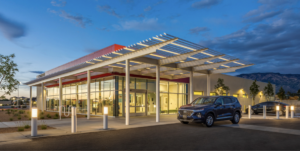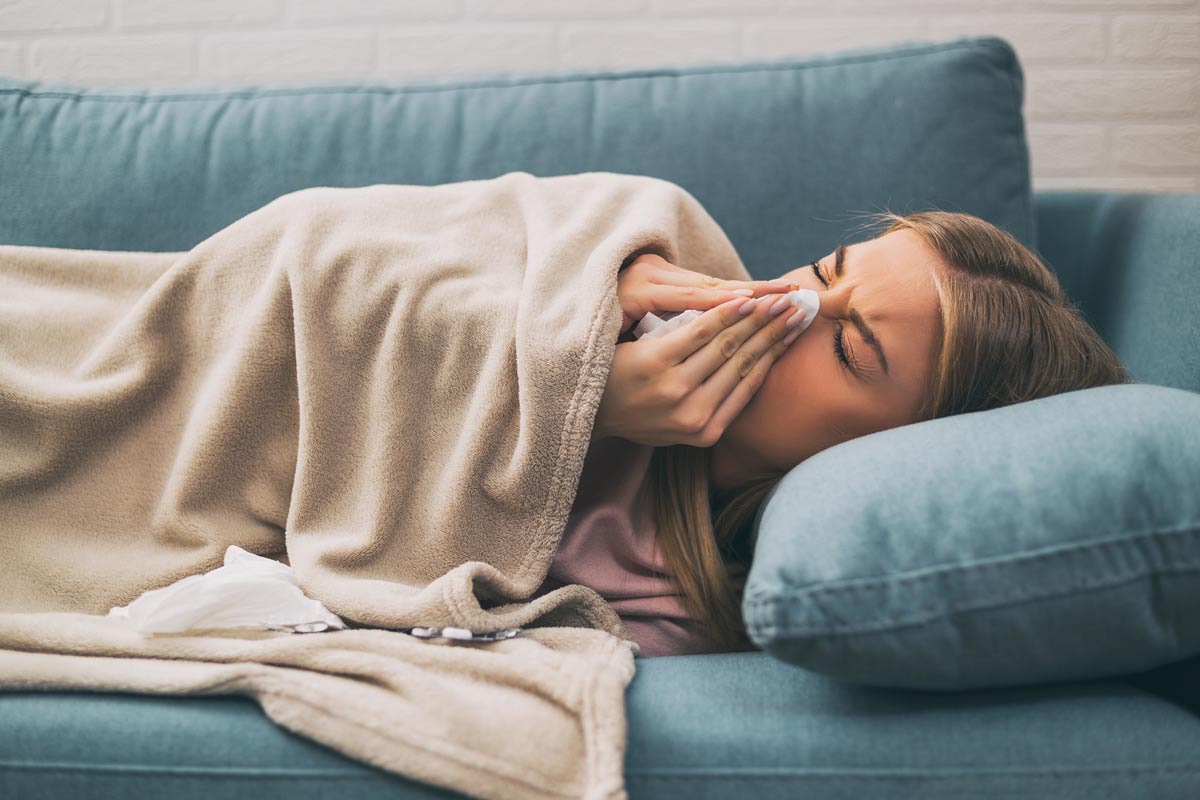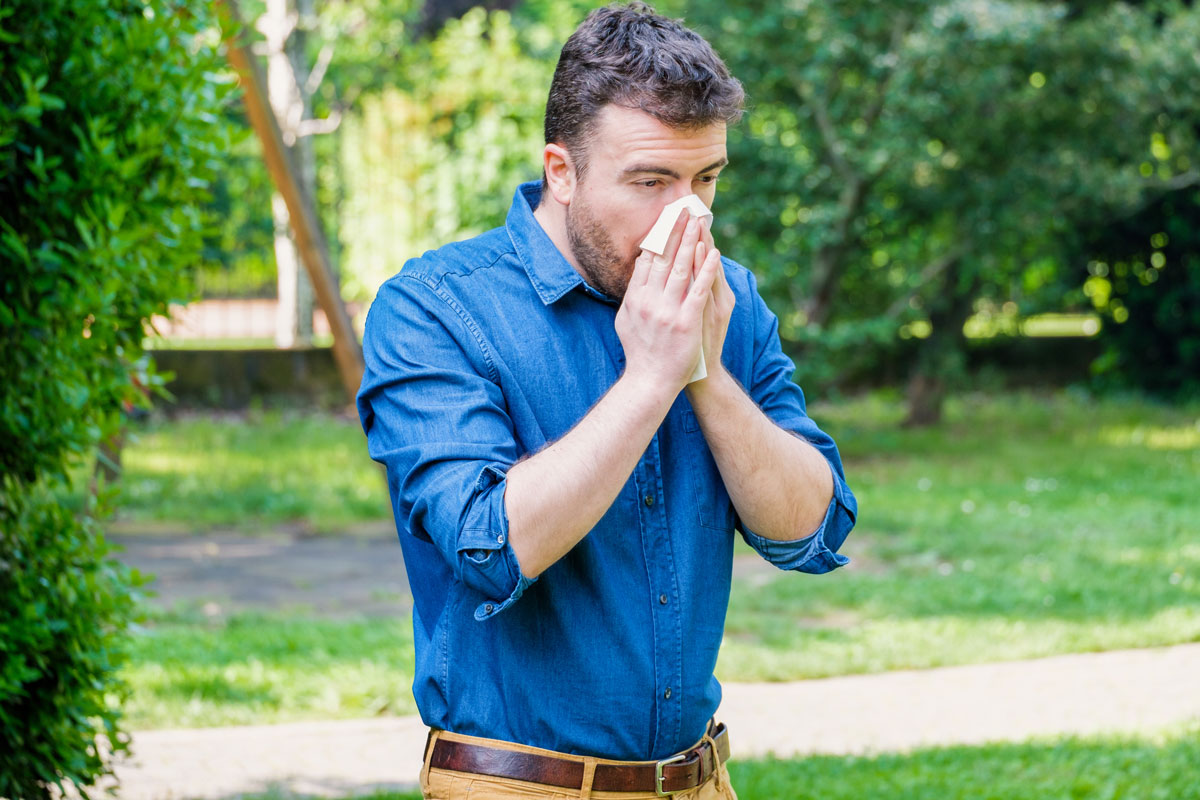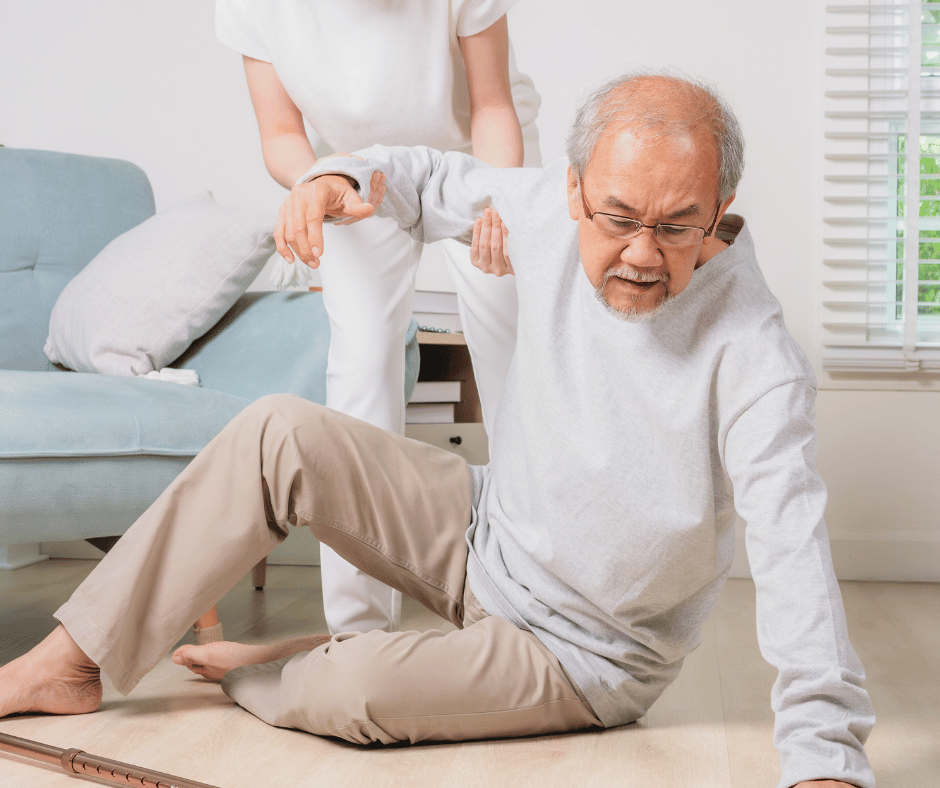We all lose our footing from time to time. Babies often fall when they learn to walk, athletes fall when they take a hit in sports, and older adults fall for various health reasons. More than one in four adults over sixty-five who live at home will fall at least once yearly. In America, 20 -30% of older people who fall suffer moderate to severe injuries such as bruises, hip fractures, or head trauma.
A sudden fall can be shocking and painful. When we fall, our bodies experience a sudden and unexpected change in momentum and direction. This rapid deceleration can cause someone to hit the ground with force, leading to possible injuries. Depending on how you land, different parts of the body may impact the ground first.
Common impact areas include hands, knees, arms, and the head. The sudden motion can strain or sprain muscles and joints as they are forced to absorb the impact.
Risk Factors that Lead to More Falls
The following factors may put you at a higher risk of experiencing falls than others:
- Age, gender, and health of an individual
- Alcohol or substance use
- Athletic/contact sports.
- Balance problems and walking style (gait)
- Occupations at elevated heights or other hazardous working conditions
- Poor mobility, cognition, and vision
- Side effects of medication
- Underlying medical conditions, such as neurological, cardiac, or other disabling conditions
What To Do Right After You Fall
If you fall, try to stay calm. Take time to assess the situation, as it can take a few minutes to feel pain from injuries. What you do next depends on whether you’re hurt and whether you can get up without help.
- Decide if you are injured and try to slowly get up or roll onto your side, holding onto something to make it easier to get off the ground.
- If you need assistance to get up, ask someone for help. If you are alone, call 911 using a phone within reach or a medical alert device. Then, move into a comfortable position and wait for help to arrive.
Common Injuries After a Fall
Strains and sprains are common injuries that vary in severity after a fall. A muscle strain is an injury to a muscle or a tendon, the fibrous tissue that connects muscles to bones. A mild strain may only overstretch a muscle or tendon, while more severe injuries may involve partial or complete tears in these tissues.
Sometimes called pulled muscles, strains commonly occur in the lower back and in the muscles at the back of the thigh (hamstrings).
The difference between a strain and a sprain is that a strain involves an injury to a muscle or to the band of tissue that attaches a muscle to a bone, while a sprain injures the bands of tissue that connect two bones together.
A knee sprain is a common injury after a fall. Treatment includes rest, ice, compression, and elevation. Mild strains can be successfully treated at home, but severe strains sometimes require surgical repair.

Symptoms of Strains and Sprains
Depending on the severity of the injury, symptoms may include:
- Limited motion
- Muscle spasms
- Muscle weakness
- Pain or tenderness
- Redness or bruising
- Swelling
In sports, athletes learn the “art of falling” in two simple words: tuck and roll. You have a split second to adjust your body as you fall. Tuck your chin to protect your neck and head to reduce the force. If you are falling forward, you should tuck your chin to look away from where you are failing. Proper techniques like rolling or tucking can help minimize injury when falling, but unexpected falls can still significantly harm the body.
How To Prevent Future Falls
Fear of falling does not need to be debilitating. These simple tips could help to prevent falls and build strength.
1. Keep moving
Regular stretching and strengthening exercises for your sport, fitness or work activity, as part of an overall physical conditioning program, can help to minimize your risk of falls and injuries. Activities such as walking, water workouts or tai chi can reduce the risk of falls by improving strength, balance, coordination and flexibility.
2. Wear sensible shoes
Consider changing your footwear as part of your fall prevention plan. High heels, floppy slippers, and shoes with slick soles can cause slips, stumbles, and falls. Instead, wear properly fitting, sturdy, flat shoes with nonskid soles. Sensible shoes may also reduce joint pain.
3. Remove home hazards
Check your home for potential fall hazards and to make your home safer:
- Immediately clean any spills.
- Move coffee tables, magazine racks, and plant stands from high-traffic areas.
- Remove boxes, newspapers, electrical cords, and phone cords from walkways.
- Repair loose wooden floorboards and carpeting.
- Secure loose rugs with double-faced tape, tacks, or slip-resistant backing, or remove loose rugs from your home.
- Store necessities within easy reach.
- Use nonslip mats in your bathtub or shower.
4. Light up your living space
Keep your home brightly lit to avoid tripping on objects that are hard to see.
- Make clear paths to light switches that aren’t near room entrances. Consider trading traditional switches for glow-in-the-dark or illuminated switches.
- Place a lamp within reach of your bed in case you need to get up in the middle of the night.
- Place night lights in your bedroom, bathroom, and hallways.
- Store flashlights in easy-to-find places in case of power outages.
- Turn on the lights before going up or down stairs.
5. Use assistive devices
Your healthcare provider might recommend using a cane or walker to keep you steady. Other assistive devices can help, too. For example:
- A raised toilet seat or one with armrests.
- A sturdy plastic seat for the shower or tub and a hand-held shower nozzle for bathing while sitting down.
- Grab bars for the shower or tub.
- Handrails for both sides of stairways.
- Nonslip treads for bare-wood steps.
If necessary, ask your doctor for a referral to an occupational therapist. An occupational therapist can help you brainstorm other fall prevention strategies.
When To Seek Urgent Care or Go to the Emergency Room
If you believe you have a strain or fracture that needs medical attention, visit your nearest urgent care. They can determine the next steps for treatment.
If the fall should cause a broken bone with skin disruption, go to the emergency room immediately, or you will risk worsening the injury.
Be sure to go to the ER if your symptoms worsen despite treatment, especially if your pain becomes intolerable or you experience numbness or tingling.

Let PRESNow 24/7 Urgent and Emergency Care Help You Get Back Up
Unlike most ERs or urgent care centers in the area, PRESNow 24/7 Urgent and Emergency Care in Albuquerque, patients are only billed for the level of services they need. The ER and urgent care are open 24 hours a day, every day. No appointment is required for in-person visits.
PRESNow 24/7 Urgent and Emergency Care has four convenient locations:
- PRESNow 24/7 Urgent and Emergency Care Paseo/San Pedro is located at 6400 Paseo Del Norte Blvd. NE, Albuquerque, NM 87113, and may be reached at 505-596-2100.
- PRESNow 24/7 Urgent and Emergency Care Coors/Western Trail is located at 4515 Coors Blvd. NW Albuquerque, NM 87120, and may be reached at 505-596-2200.
- PRESNow 24/7 Urgent and Emergency Care Isleta/Rio Bravo is located at 3436 Isleta Blvd SW, Albuquerque, NM 87105, and may be reached at 505-596-2300.
- PRESNow 24/7 Urgent and Emergency Care Menaul/Pennsylvania is located at 7400 Menaul Blvd NE, Albuquerque, NM 87110, and may be reached at 505-596-2400.















